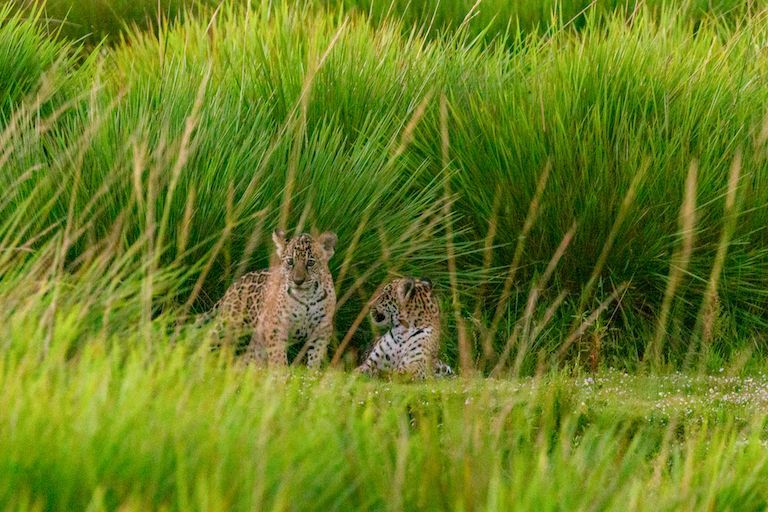
🐅 Jaguars back in Argentina's wetlands after 70 years
A new effort to deploy jaguars in protected areas where locals welcome them will help Argentina save its jaguar population.
Share this story!
70 years ago, the last jaguar disappeared from the Argentine wetlands Iberá. But at the beginning of this year, they made their comeback. That is when Argentine conservationists released a jaguar female and her two cubs.
The jaguars were released into a 709,000-hectare national park that opened in 2018. The plan is to reintroduce species that, just like the jaguar, lived here for a long time , but which became extinct by humans during the last century.
In the last 150 years, the jaguar population in Argentina has crashed. There are now only 200-300 jaguars left in the wild and their territories are getting smaller. The plan is to release up to 100 jaguars, raised in captivity, in Iberá over several years, where they are protected and have plenty of hunting prey.
However, the conservationists intend to start small. Over the next year, six more jaguars will be released. These are more females with young. The reason for this is that jaguar females have smaller territories than males and therefore remain within Iberá's borders. Once they are established, males can be released because they then want to stay close to the females' territory.
The conservationists have high hopes that the implantation of jaguars will be successful. They have already reintroduced deer, monkeys and anteaters that now thrive in Iberá. Getting the jaguars back is extra important because they are at the top of the food chain and necessary to recreate the ecosystem as it was before they disappeared.
The reason why the jaguars disappeared last time was, as I said, human activity, but the conservationists do not think that should be a problem this time. On the one hand, the entire area is now protected, and on the other hand, the local population is more positive.
There are now many activities in the local area that are based on ecotourism and the jaguars are likely to attract more ecotourists in the future. One of those who runs such a business is Marcos García Rams who also runs a cattle ranch. You might think he does not want predators anywhere near his animals, but he has no problem with the new jaguars.
- I'm not at all worried because the area is full of prey for the jaguars. There is room for many jaguars within the park's 700,000 hectares. It will be a long time before that area is filled with jaguars, he says in a comment to Mongabay.
By becoming a premium supporter, you help in the creation and sharing of fact-based optimistic news all over the world.


